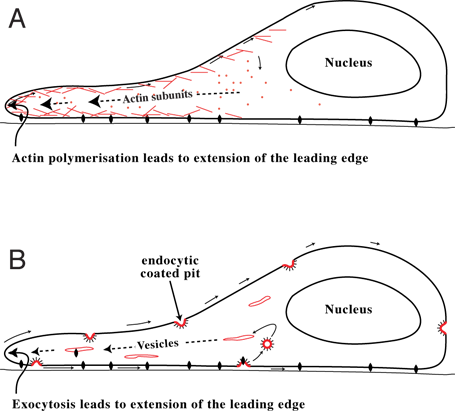|
Birthmark
A birthmark is a congenital, benign irregularity on the skin which is present at birth or appears shortly after birth—usually in the first month. Birthmarks can occur anywhere on the skin. They are caused by overgrowth of blood vessels, melanocytes, smooth muscle, fat, fibroblasts, or keratinocytes. Dermatologists divide birthmarks into two types: pigmented birthmarks and vascular birthmarks. Pigmented birthmarks caused by excess skin pigment cells include: moles, café au lait spots, and Mongolian spots. Vascular birthmarks, also called red birthmarks, are caused by increased blood vessels and include macular stains (salmon patches), hemangiomas, and port-wine stains. A little over 1 in 10 babies have a vascular birthmark present by age 1. Several birthmark types are part of the group of skin lesions known as nevi or naevi, which is Latin for "birthmarks". Birthmarks occur as a result of a localized imbalance in factors controlling the development and migration of skin ... [...More Info...] [...Related Items...] OR: [Wikipedia] [Google] [Baidu] |
Mongolian Spots
A Mongolian spot, also known as a slate grey nevus or congenital dermal melanocytosis, is a benign, flat, congenital birthmark with wavy borders and an irregular shape. In 1883, it was described and named after Mongolians by Erwin Bälz, a German anthropologist based in Japan, who erroneously believed it to be most prevalent among his Mongolian patients. It normally disappears three to five years after birth and almost always by puberty. The most common color is blue, although they can be blue-gray, blue-black or deep brown. Cause Mongolian spot is a congenital developmental condition—that is, one existing from birth—exclusively involving the skin. The blue colour is caused by melanocytes, melanin-containing cells, that are usually located in the surface of the skin (the epidermis), but are in the deeper region (the dermis) in the location of the spot. Usually, as multiple spots or one large patch, it covers one or more of the lumbosacral area (lower back), the buttocks, s ... [...More Info...] [...Related Items...] OR: [Wikipedia] [Google] [Baidu] |
Macular Stain
A port-wine stain (''nevus flammeus'') is a discoloration of the human skin caused by a vascular anomaly (a capillary malformation in the skin). They are so named for their coloration, which is similar in color to port wine, a fortified red wine from Portugal. A port-wine stain is a capillary malformation, seen at birth. Port-wine stains persist throughout life. The area of skin affected grows in proportion to general growth. Port-wine stains occur most often on the face but can appear anywhere on the body, particularly on the neck, upper trunk, arms and legs. Early stains are usually flat and pink in appearance. As the child matures, the color may deepen to a dark red or purplish color. In adulthood, thickening of the lesion or the development of small lumps may occur. Port-wine stains may be part of a syndrome such as Sturge–Weber syndrome or Klippel–Trénaunay–Weber syndrome. Types Nevus flammeus may be divided as follows:James, William; Berger, Timothy; Elston, ... [...More Info...] [...Related Items...] OR: [Wikipedia] [Google] [Baidu] |
Nevus
Nevus () is a nonspecific medical terminology, medical term for a visible, circumscribed, chronic (medicine), chronic lesion of the skin or mucosa. The term originates from , which is Latin for "birthmark"; however, a nevus can be either congenital (present at birth) or acquired. Common terms (''mole'', ''birthmark'', ''beauty mark'', etc.) are used to describe nevi, but these terms do not distinguish specific types of nevi from one another. Classification The term ''nevus'' is applied to a number of conditions caused by Neoplasm, neoplasias and hyperplasias of melanocytes, as well as a number of pigmentation disorders, both hypermelanotic (containing increased melanin, the pigment responsible for skin color) and hypomelanotic (containing decreased melanin). Suspicious skin moles which are multi-colored or pink may be a finding in skin cancer. Increased melanin Usually acquired * Melanocytic nevus ** Melanocytic nevi can be categorized based on the location of melanocytic ... [...More Info...] [...Related Items...] OR: [Wikipedia] [Google] [Baidu] |
Café Au Lait Spot
''Café au lait'' spots, or ''café au lait'' macules, are flat, hyperpigmented birthmarks. The name ''café au lait'' is French for "coffee with milk" and refers to their light-brown color. They are caused by a collection of pigment-producing melanocytes in the epidermis of the skin. These spots are typically permanent and may grow or increase in number over time. Café au lait spots are often harmless but may be associated with syndromes such as neurofibromatosis type 1 and McCune–Albright syndrome. Café au lait lesions with rough borders ("coast of Maine") may be seen in McCune–Albright syndrome. In contrast, café au lait lesions of neurofibromatosis type 1 have smooth borders ("coast of California"). Cause Café au lait spots can arise from diverse and unrelated causes: *Ataxia–telangiectasia * Basal cell nevus syndrome * Benign congenital skin lesion * Bloom syndrome * Chédiak–Higashi syndrome * Congenital melanocytic naevus * Fanconi anemia * Fibrous dyspl ... [...More Info...] [...Related Items...] OR: [Wikipedia] [Google] [Baidu] |
Melanocytic Nevus
A melanocytic nevus (also known as nevocytic nevus, nevus-cell nevus, and commonly as a mole) is usually a Malignancy, noncancerous condition of pigment-producing Human skin, skin cells. It is a type of melanocytic tumor that contains nevus cells. A mole can be either subdermal (under the skin) or a pigmented growth on the skin, formed mostly of a type of cell known as a melanocyte. The high concentration of the body's pigmenting agent, melanin, is responsible for their dark color. Moles are a member of the family of skin lesions known as nevi (singular "nevus"), occurring commonly in humans. Some sources equate the term "mole" with "melanocytic nevus", but there are also sources that equate the term "mole" with any nevus form. The majority of moles appear during the first 2 decades of a person's life, with about 1 in every 100 babies being born with moles. Acquired moles are a form of Benign tumor, benign neoplasm, while congenital moles, or congenital nevi, are considered a min ... [...More Info...] [...Related Items...] OR: [Wikipedia] [Google] [Baidu] |
Infant
In common terminology, a baby is the very young offspring of adult human beings, while infant (from the Latin word ''infans'', meaning 'baby' or 'child') is a formal or specialised synonym. The terms may also be used to refer to juveniles of other organisms. A newborn is, in colloquial use, a baby who is only hours, days, or weeks old; while in medical contexts, a newborn or neonate (from Latin, ''neonatus'', newborn) is an infant in the first 28 days after birth (the term applies to premature, full term, and postmature infants). Infants born prior to 37 weeks of gestation are called "premature", those born between 39 and 40 weeks are "full term", those born through 41 weeks are "late term", and anything beyond 42 weeks is considered "post term". Before birth, the offspring is called a fetus. The term ''infant'' is typically applied to very young children under one year of age; however, definitions may vary and may include children up to two years of age. When a human chi ... [...More Info...] [...Related Items...] OR: [Wikipedia] [Google] [Baidu] |
Congenital Melanocytic Nevus
The congenital melanocytic nevus is a type of melanocytic nevus (or mole) found in infants at birth. This type of birthmark occurs in an estimated 1% of infants worldwide; it is located in the area of the head and neck 15% of the time. Signs and symptoms The congenital melanocytic nevus appears as a circumscribed, light brown to black patch or plaque, potentially very heterogeneous in consistency, covering any size surface area and any part of the body. As compared with a melanocytic nevus, congenital melanocytic nevi are usually larger in diameter and may have excess terminal hair, a condition called hypertrichosis. If over projected adult diameter with hypertrichosis, it is sometimes called giant hairy nevus; more usually these largest forms are known as large or giant congenital melanocytic nevus. The estimated prevalence for the largest forms is 0.002% of births. Melanocytic nevi often grow proportionally to the body size as the child matures. As they mature, they of ... [...More Info...] [...Related Items...] OR: [Wikipedia] [Google] [Baidu] |
Hemangioma
A hemangioma or haemangioma is a usually benign vascular tumor derived from blood vessel cell types. The most common form, seen in infants, is an infantile hemangioma, known colloquially as a "strawberry mark", most commonly presenting on the skin at birth or in the first weeks of life. A hemangioma can occur anywhere on the body, but most commonly appears on the face, scalp, chest or back. They tend to grow for up to a year before gradually shrinking as the child gets older. A hemangioma may need to be treated if it interferes with vision or breathing or is likely to cause long-term disfigurement. In rare cases internal hemangiomas can cause or contribute to other medical problems. They usually disappear by 10 years of age. The first line treatment option is beta blockers, which are highly effective in the majority of cases. Hemangiomas present at birth are called ''congenital hemangiomas'', while those that form later in life are called ''infantile hemangiomas''. Types Heman ... [...More Info...] [...Related Items...] OR: [Wikipedia] [Google] [Baidu] |
Mikhail Gorbachev
Mikhail Sergeyevich Gorbachev (2 March 1931 – 30 August 2022) was a Soviet and Russian politician who served as the last leader of the Soviet Union from 1985 to dissolution of the Soviet Union, the country's dissolution in 1991. He served as General Secretary of the Communist Party of the Soviet Union from 1985 and additionally as head of state beginning in 1988, as Chairman of the Presidium of the Supreme Soviet from 1988 to 1989, Chairman of the Supreme Soviet from 1989 to 1990 and the president of the Soviet Union from 1990 to 1991. Ideologically, Gorbachev initially adhered to Marxism–Leninism but moved towards social democracy by the early 1990s. Gorbachev was born in Privolnoye, Stavropol Krai, Privolnoye, North Caucasus Krai, to a poor peasant family of Russian and Ukrainian heritage. Growing up under the rule of Joseph Stalin, in his youth he operated combine harvesters on a Collective farming, collective farm before joining the Communist Party of the Soviet Union, ... [...More Info...] [...Related Items...] OR: [Wikipedia] [Google] [Baidu] |
Beauty Marks
A beauty mark or beauty spot is a euphemism for a type of dark facial mark so named because such birthmarks are sometimes considered an attractive feature.Ariel, Irving M. (1981). A Historical Introduction: Is the beauty mark a mark of beauty or a potentially dangerous cancer? ''Malignant Melanoma,'' Appleton-Century-Crofts, Medically, such "beauty marks" are generally melanocytic nevus, more specifically the compound variant. Moles of this type may also be located elsewhere on the body, and may also be considered beauty marks if located on the face, shoulder, neck or breast. Artificial beauty marks have been fashionable in some periods. Artificial beauty marks History The wearing of artificial beauty marks trace back to the Roman Empire; it was believed that the Goddess of beauty, Venus, had a single beauty mark that accentuated her beauty. As such, beauty patches became a recognizable symbol of beauty designed to highlight the pale, unblemished skin of the wearer. In Euro ... [...More Info...] [...Related Items...] OR: [Wikipedia] [Google] [Baidu] |
Cell Migration
Cell migration is a central process in the development and maintenance of multicellular organisms. Tissue formation during embryogenesis, embryonic development, wound healing and immune system, immune responses all require the orchestrated movement of cells in particular directions to specific locations. Cells often migrate in response to specific external signals, including chemotaxis, chemical signals and mechanotaxis, mechanical signals. Errors during this process have serious consequences, including intellectual disability, cardiovascular disease, vascular disease, tumor, tumor formation and metastasis. An understanding of the mechanism by which cells migrate may lead to the development of novel therapeutic strategies for controlling, for example, invasive tumour cells. Due to the highly viscous environment (low Reynolds number), cells need to continuously produce forces in order to move. Cells achieve active movement by very different mechanisms. Many less complex prokaryotic ... [...More Info...] [...Related Items...] OR: [Wikipedia] [Google] [Baidu] |








